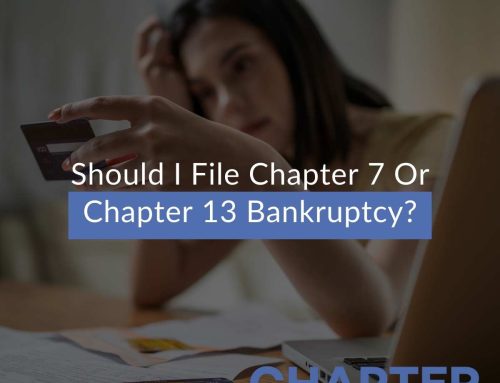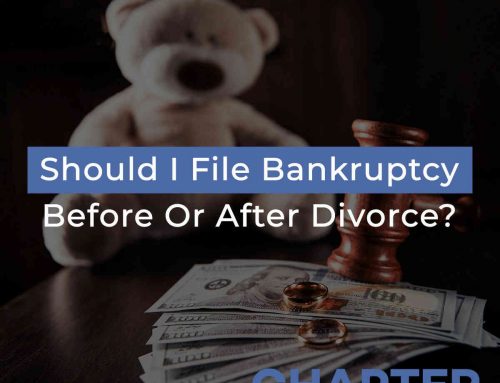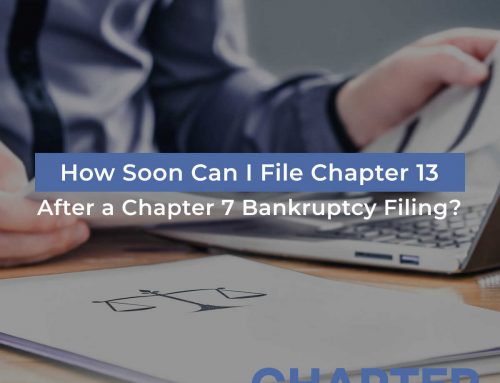Can I Keep My House If I File For Chapter 13 Bankruptcy?
Buying a home is a major step for many people towards financial stability and a positive credit history. Unfortunately, home ownership is expensive, and sometimes it can cause bills to pile up until they’ve reached a point where they realistically won’t be paid off without some help. Unless you own your home outright, this could put you in a dire situation- your mortgage lender may begin the foreclosure process after just a few late or missed payments. If you can’t work out some arrangement with your mortgage lender, a foreclosure could cause you to lose your home and potentially leave you homeless. The good news is that you may have bankruptcy available as an option to protect your assets and save your home. For your free consultation with one of our experienced Arizona bankruptcy lawyers, call 480-448-9800.

Chapter 7 vs. Chapter 13
Most people hold a stronger association with Chapter 7 and bankruptcy than Chapter 13. Chapter 7 wipes out debts like medical bills and credit cards with (usually) no payment from the debtor. Chapter 13 bankruptcy operates in an entirely different fashion. Instead of clearing debts, they are reorganized and repaid in order of the court’s perceived importance. Usually, all, or almost all of the debtor’s disposable monthly income will be paid into the plan. There may be unsecured nonpriority debts remaining at the end of the plan- those that would be discharged in a Chapter 7 bankruptcy. If so, those can be discharged as long as all of the mandatory debts in the plan have been paid. It will all depend on the specific debtor’s income and debt structure.
Chapter 7 bankruptcy has strict income limitations, so the reason many people file Chapter 13 bankruptcy is simply because they don’t qualify for Chapter 7. Additionally, assets that aren’t protected by Arizona’s bankruptcy exemptions could be at risk of trustee seizure in a Chapter 7 bankruptcy. The trustee will sell these assets at auction and use the sale proceeds to pay debts. But some debtors choose Chapter 13 regardless of their qualifications because of the benefits it offers.
When you fall behind on payments for a financed asset, be it a home, car, etc., the lender usually has the option to repossess the asset. You can check the terms of your loan agreements to see what must occur before your lender can begin the repossession or foreclosure process. One of the benefits of using Chapter 13 to address debt is that it allows you to catch up on missed payments for a secured or priority debt. It also provides the opportunity to discharge secondary mortgages on a primary residence if the home’s value is under water. If you have more questions about the benefits and disadvantages of Chapter 7 and Chapter 13, you can discuss them with a dedicated member of our Arizona bankruptcy team. Call 480-448-9800 to schedule your free consultation today.
Catching Up on Mortgage Payments in a Chapter 13 Payment Plan
In most Chapter 13 bankruptcy plans, all secured assets must be paid off during the 3 or 5 years allotted. However, this usually won’t apply to a primary residence home mortgage. Your payment plan will include your regular monthly payment, as well as your balance in arrears. This means instead of having just weeks or days to catch up on your back mortgage payments, a Chapter 13 bankruptcy will spread that amount over either 3 or 5 years. The automatic stay will protect you from foreclosure until the payment plan is complete. Generally, your automatic stay will remain in good standing if you make your payments on time and finish your payment plan. At the end of a Chapter 13, you should be caught up on your mortgage and paid off the rest of your debts, with some debts like credit cards and medical bills being discharged.
The Automatic Stay & Home Foreclosure
If your house hasn’t already sold at a foreclosure auction, you can stall or completely stop the process using bankruptcy’s automatic stay. The automatic stay is a bankruptcy mechanism that activates when the bankruptcy petition is filed. A creditor mailing matrix must be included with the bankruptcy petition so the court can mail out a notice of the bankruptcy- and the automatic stay- to all of your creditors. This is their notice not to foreclose or repossess assets, file a lawsuit against the debtor, and more. If the creditor wants to proceed with any of these actions, they must wait until the case is dismissed, or petition the court for relief from the automatic stay.
If any of your creditors file a petition for relief from the automatic stay, your bankruptcy case will become more complicated. This is essentially a creditor’s request to be given permission to bypass the automatic stay and proceed with debt collection, regardless of the bankruptcy case’s status. You may need to prove to the court why one or more of your creditors shouldn’t have the opportunity to proceed with a lawsuit, foreclosure, repossession, etc., during your bankruptcy. A bankruptcy attorney can help convince the court that your assets should remain fully protected.
Emergency Filings on the Brink of Foreclosure
Creating a Chapter 13 bankruptcy payment plan and its accompanying petition is no small task. It takes many people weeks, or even months, to gather all the documents and information necessary to complete a bankruptcy petition. But if your mortgage lender is threatening foreclosure, you may not have that long. Situations like these are why emergency filings, also known as skeleton petition filings, are available.
An emergency filing requires limited information as compared to what a full Chapter 13 bankruptcy petition needs. One of the most important things is your past 6 months of income information. This is so the court can confirm that you indeed qualify for bankruptcy. You will also need to complete your first online credit counseling course and include your course completion certificate in an emergency filing. You can use your credit report to compile a list of creditors whose debts you will discharge in bankruptcy. This allows debtors to declare bankruptcy faster when creditors are about to take drastic actions. This activates the automatic stay, and the debtor will have 2 weeks to submit the rest of the bankruptcy petition. When we have clients who come to us on the eve of a home foreclosure, we can usually draft and file these types of petitions in just a few hours. Contact our office to learn more at 480-448-9800.
The Arizona Bankruptcy Team You Can Trust in Foreclosures and Other Emergency Situations
There is no room for mistakes if you are filing Chapter 13 bankruptcy to save your home from foreclosure. Errors and discrepancies could cause your case to be dismissed, creating a lapse in your automatic stay that gives creditors the opportunity to move in on your assets. The chances of successfully completing a Chapter 13 bankruptcy without a skillful bankruptcy attorney are extremely low. Chapter Bankruptcy Lawyers offer the knowledge and experience your case may require, with flexible payment options to make filing more affordable. When you’re ready to learn more about the process, call our office to schedule your free consultation at 480-448-9800.
Chapter Bankruptcy Lawyers
Mesa Office
3707 E Southern Ave
Mesa, AZ 85206
Phone: 480-405-1010
Email: [email protected]
Tempe Office
4500 S Lakeshore Dr #300
Tempe, AZ 85282
Phone: 480-562-6145
Email: [email protected]





